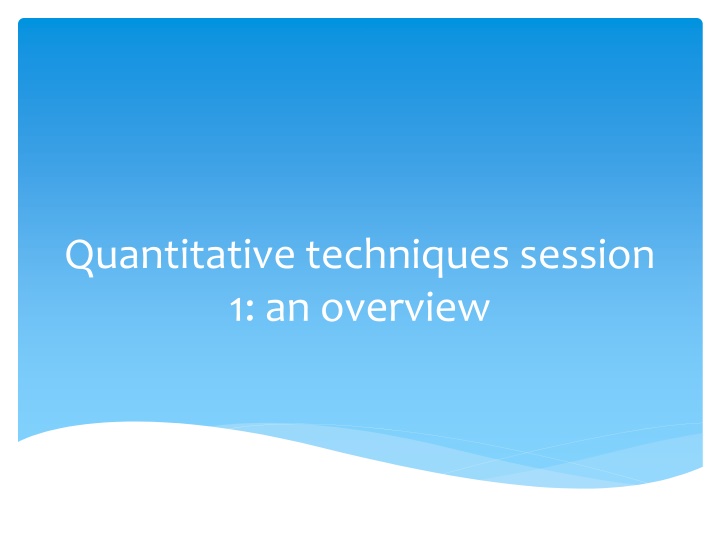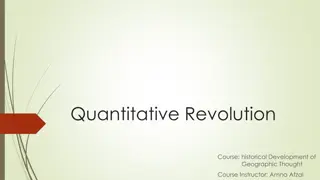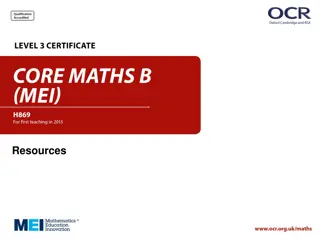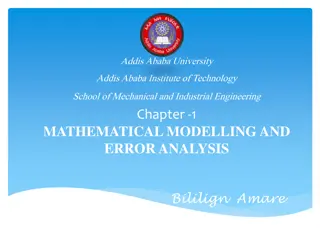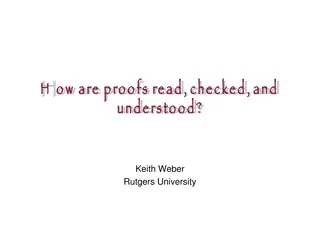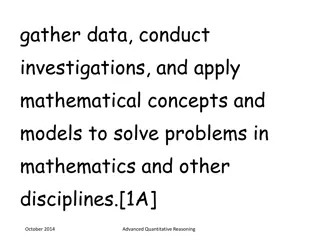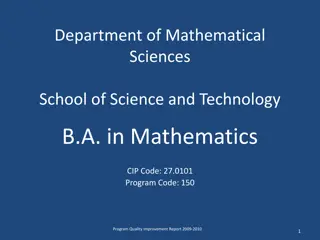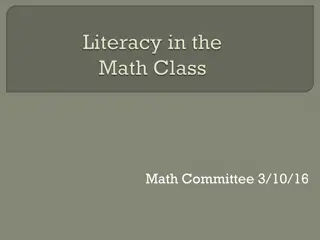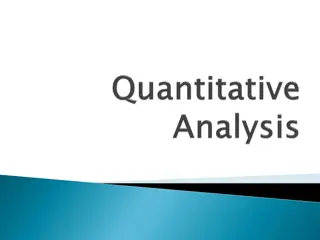Quantitative Techniques in Economics: Mathematical Models and Analysis
This series delves into the application of mathematical models in economics, focusing on understanding complex relationships and analyzing economic variables and policies. It emphasizes the importance of mathematical economics for postgraduate studies in the field, offering a blend of theory and practice for a comprehensive grasp of economic decision-making processes.
Download Presentation

Please find below an Image/Link to download the presentation.
The content on the website is provided AS IS for your information and personal use only. It may not be sold, licensed, or shared on other websites without obtaining consent from the author.If you encounter any issues during the download, it is possible that the publisher has removed the file from their server.
You are allowed to download the files provided on this website for personal or commercial use, subject to the condition that they are used lawfully. All files are the property of their respective owners.
The content on the website is provided AS IS for your information and personal use only. It may not be sold, licensed, or shared on other websites without obtaining consent from the author.
E N D
Presentation Transcript
Quantitative techniques session 1: an overview
Quantitative techniques under the magnifying glass: what is it about ? (1/8) Here is how I see it: It is about understanding/consolidating some economic knowledge using mathematical models/techniques Or It is about understanding/practicing some mathematical techniques using economic theory A more appropriate title for this course would be mathematical economics or quantitative economics
Quantitative techniques under the magnifying glass: what is it about ? (2/8) It is NOT a pure / standard mathematics course: Although the main language is algebra Although some of you will be introduced to new mathematical techniques Although a solid background in mathematics is helpful The meaningful mix that is required is to (drum roll ): Understand the model (the variables/relationships) Solve the model (using mathematical techniques to find solution/equilibrium values) Interpret the results ( giving a meaning to the equations/results)
Quantitative techniques under the magnifying glass: why offering it? (3/8) Math is one tool in the toolkit available for economists Advantages of this tool: Helps you to describe complex relationships among economic variables via relatively simple mathematical models Helps you to analyze possible consequences of changes in some variables/policies (comparative-static analysis) Mathematical models can be tested empirically (notably via econometrics) In short, it enables you to better understand how entities make choices and how the economy as a whole operates
Quantitative techniques under the magnifying glass: why offering it? (4/8) A solid knowledge in mathematical economics will be extremely helpful for postgraduate studies: Most of what we will cover is a prerequisite for solid postgraduate degrees (although we do not have enough time to cover all the topics that are typically encountered in postgraduate degrees in economics) Many Master programs in economics are relatively heavy on math
Quantitative economics under the magnifying glass: a word of caution (5/8) Although mathematics is very useful in economics, some remarks are in order: Once you get to know some basic mathematical techniques, more advanced ones will become easy to understand and apply Math is only one tool at the disposal of economists (and new tools are being added to the toolkit) The use of math in economics has its limits: The discipline of economics has yet to get over its childish passion for mathematics ( ) at the expense of historical research and collaboration with the other social sciences. This obsession with mathematics is an easy way of acquiring the appearance of scientificity without having to answer the far more complex questions posed by the world we live in. (T. Piketty, Capital in the 21stcentury , 2014)
Quantitative techniques under the magnifying glass: main topics covered (6/8) Here is a summary of the main topics covered (more details in the syllabus): Topics Techniques Introduction Economic models Static/equilibrium analysis Equilibrium analysis in economics Linear models and matrix algebra Comparative static analysis Comparative statics and the concept of derivative Rules of differentiation Comparative-static analysis of general- function models Optimization Optimization techniques with one choice variable Optimization techniques with more than one choice variable
Quantitative techniques under the magnifying glass: is it difficult? (7/8) Of course not, and here is why: You should be familiar with most of the topics that we will examine Unlike a typical (and perhaps dismal) math course, this one has a number of interesting features: The methodology used is relatively informal and reader- friendly and appeals to your intuition (as opposed to more formal/theoretical math courses) To a large extent, mathematical techniques are matched with their (micro/macro) applications in economics: the relevance of mathematics to economics is explicitly made obvious
Quantitative techniques under the magnifying glass: is it difficult? (8/8) Of course not, and here is why: Unlike a typical (and perhaps dismal) math course, this one has a number of interesting features (Cont): Elementary tools will serve as stepping stones to the more advanced tools: no one will get lost in translation along the way Exercises are designed to make sure that you grasp the techniques and bolster your confidence
So, can I successfully pass this course? (1/2) Of course you can, and here is the (no) secret list of what to do: You are highly encouraged to attend all classes to ask questions whenever there is something not fully understood to take notes and review them regularly And to prepare the assignments
So, can I successfully pass this course? (2/2) Of course you can, and here is the (no) secret list of what to do: You are highly encouraged to be on time (read: before time) I typically start the class right on time Students who arrive late will not be allowed to enter the class You must turn off/ (or switch to silent mode) your cell phone before entering the class You are expected not to use your cell phone during the class After a first (and usually a final) warning , a student caught using his/her cell phone is likely (0.5 < probability 1) to be asked to leave the class In all cases, using cell phones in class will SEVERELY affect your attendance/participation/attitude grade You must remain seated while the attendance is checked In case you need to leave the class, you must first get the permission of the instructor In case you have a question, kindly raise your hand first (you are free to raise whichever hand you like)
Final recommendations Check the blackboard regularly, where you will notably find: The syllabus and other interesting material The course grade is a reflection of your dedication and work, regardless of your background and objectives: Students who are about to graduate/working parallel to the class/ repeating the course are expected to be as responsible/serious as the rest of the class and will be treated as the rest (no favors done!) Try to remember this last point during the last week of the course/after the final exam before bombarding my inbox with emails!
